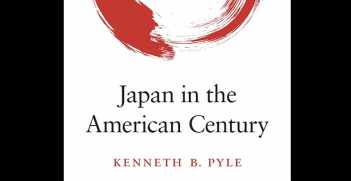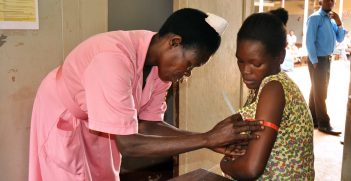The Challenge of Closing the Gender Gap in Japan

Recent controversies on gender equity in Japan point to the necessary directions for reform.
At the end of 2019 the World Economic Forum (WEF) released its latest Global Gender Gap Report. The annual WEF report measures participation rates and gaps between men and women in the categories of economic participation and opportunity, educational attainment, health and survival and political empowerment. No country has yet achieved gender parity and globally there is still a 31.4 percent average gender gap. The Nordic countries of Iceland, Norway, Finland and Sweden score well, with New Zealand also in the top ten of the 153 countries surveyed. Australia is ranked at number 44.
Japan always ranks well on health and education, but the rankings for economic and political participation bring its overall ranking down.
Every year when the WEF report is released, concern is expressedabout Japan’s plummeting ranking. This is quite extraordinary for a wealthy member of the Organisation for Economic Co-Operation and Development (OECD). In the latest report, Japan has dropped to 121st in the world, down from 110th in the previous year.
This may seem surprising, for many of the institutional mechanisms for achieving gender equity are already in place. The Constitution of Japan has, since 1947, guaranteed freedom from discrimination on the grounds of sex and has affirmed the right to equality in education, employment, political participation, marriage, and family relations. The Constitution is backed up by the Labour Standards Law of 1947, which affirmed the right to equal pay for equal work, and included provisions for nursing leave and maternity leave. This was followed by the Equal Employment Opportunity Law which came into effect in 1986, the Basic Law for a Gender Equal Society of 1999, a law concerning parenting leave and carers’ leave in 1991, and a carers’ insurance system in 1997.
The latest WEF rankings were released after a year of controversy in Japan concerning university admissions. In 2018 it was revealed that the private Tokyo Medical University (not to be confused with Tokyo University – the most prestigious national institution) had systematically discriminated against female applicants for over ten years. The scandal emerged in an investigation of allegations that the university had been given preferential access to research funding in exchange for the irregular entry to the medical school of a relative of an education ministry bureaucrat. On investigation, it was found that Tokyo Medical University had systematically altered the examination scores of female candidates and other candidates who were sitting the examination for the third or fourth time. Another ten private universities were found to have similar practices.
The President of Tokyo Medical University resigned and was replaced by its first female President. Once Tokyo Medical University reformed its procedures, female candidates actually outperformed males. The University also offered places to those who had previously been discriminated against.
As is well-known, entrance to university in Japan is fiercely competitive, particularly in professional courses like medicine. For professions such as law and medicine, in addition to the years of university study, students must pass a national qualifying examination in order to enter the profession.
Although there is a national examination, known as the Sentā Shiken (Central Examination) which may be used in assessing applications to universities, most universities use their own examinations and supplementary interviews. Because the universities do not publish the correct answers to their examination questions and do not provide detailed test scores for the applicants, there is a distinct lack of transparency, at least in private universities like Tokyo Medical University, which has been the subject of the latest scandal.
In 2015, there were 80 medical schools in Japan with a total capacity of around 9,000 students at that time. The proportion of female students in 2015 was 40 per cent and increasing. However, only 17.4 per cent of practising doctors at that time were women. An earlier Ministry of Health and Welfare study found that women tended to temporarily leave the profession between the ages of 25 and 40 – peak childbearing and childrearing years.
The university’s rationale for the discrimination against the female candidates was a belief that they were less likely to remain in the profession if they married and had children. This does not seem to have been based on any empirical examination of the career paths of men and women. In practice, both male and female medical practitioners might leave a particular position for various reasons – to take up opportunities elsewhere or to pursue study opportunities overseas.
While it has been shown that women’s careers are, indeed, likely to be interrupted by childbearing, childrearing and other caring responsibilities, this cannot be used to predict the career choices of any one individual. This is particularly so at a time when individuals in Japan are marrying later, if at all; are having fewer children; and are having children later, if at all.
A more considered response would look at the working conditions for both male and female doctors, and how conditions could be improved so that both male and female doctors can achieve work-life balance. Allowing for meaningful lifetime careers and the full utilisation of skills and talents for both male and female professionals can only be for the benefit of the country.
The challenge is to create an environment where people will be encouraged to take up existing rights like parenting leave, rather than being made to feel ostracised. Once terms like sexual harassment (abbreviated to seku-hara) were domesticated in the Japanese-language, this led to other coinages such as mata-hara (maternal harassment) and pata-hara (paternal harassment) –workplace behaviours which discouraged workers from exercising their rights to parenting leave.
What the Tokyo Medical University demonstrates is that a robust legal and policy framework is just one element of achieving gender equity. Laws and policies need to be accompanied by education, affirmative action programs, and regular monitoring. We should be pleased that the investigation exposed the problems at Tokyo Medical University and several other colleges, and that the University moved to replace its President and attempt some form of redress for those who had been discriminated against.
What is needed now is a process of reflection on the organisational culture of this and other medical schools and a program aimed at assisting both male and female medical practitioners to achieve work-life balance.
More transparency is also needed in university admissions procedures, perhaps with the institution of a more centralised and distanced set of admission procedures.
The Tokyo Medical University admissions scandal is just one instructive example, pointing to the measures needed to improve gender equity rankings in the future.
Vera Mackie (her UoW profile can be viewed here) is Senior Professor of Asian and International Studies and Director of the Centre for Critical Human Rights Research at the University of Wollongong.
This article is published under a Creative Commons Licence and may be republished with attribution.





